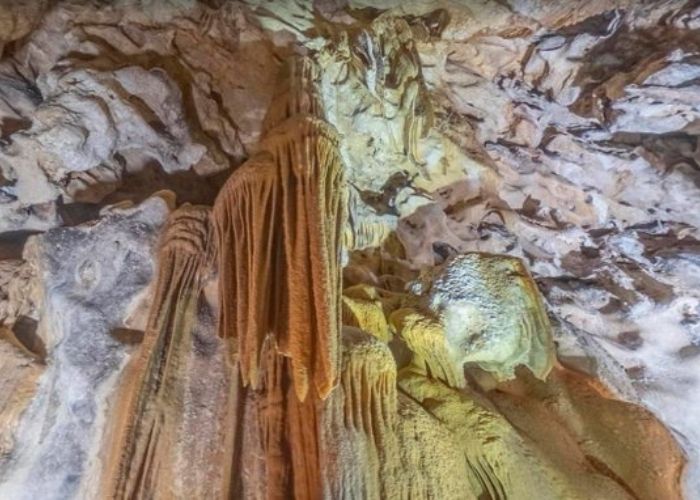RINCóN DE LA VICTORIA – Researchers may have found evidence of a prehistoric human presence in the new cave recently discovered in La Araña (Málaga). These are two possible grease lamps similar to those in the neighbouring Cuevas de La Araña site.
The new cave was discovered on the land of the cement factory of La Araña in Rincón de la Victoria. This is in the municipality east of the city of Málaga. However, for the time being, the cave is known as Maravilla Blanca, the White Wonder.
If the authenticity and origin of these remains is confirmed, it would provide clear evidence of human presence. La Opinion de Málaga contacted Julián Ramos, director of the Interpretation Centre of the Caves of La Araña, a UNESCO site, and director of the research. On viewing the photos, he has no doubts: “They are definitely prehistoric.”
Ramos is responsible for the neighbouring cave. And explains that the roughly twelve thick lamps analysed there date back from 45,000 BC (Neanderthal period) to 4,500 (Neolithic). At this point in history, caves were not used for living in, but to bury the dead.
In the case of the Cuevas de La Araña complex, both portable lamps have been found in scallops and fixed lamps, the type of the two found in the new cave.
Animal fat or marrow as fuel
The archaeologist indicates that these fixed lamps were used to illuminate passageways or dark spaces. “They made a little hole, and we know they’d rather put it in the fossil stalagmites and put a handful of animal fat or animal marrow in it and put a fuse on it. We’ve done experimental archaeology and the fuses that worked best works are those of plant strands. Some of these lamps last for three to four hours,” he reports.
As for the material used as fuel, Ramos explains that animal marrow was the most suitable. This is “because it burns better. However, but only it was a much more expensive product because they did not catch a mammoth, a bison, or a horse every day, Therefore, that’s why the fat of every other animal was used: goat, wild boar, even birds.”
Julián Ramos underlines the difficulty so far in determining the age of the lamps found. “Some results point to Neanderthals who made the lamps and others point to the Cro-Magnons.”
“The impression I get when I see the grease lamps is that there has at least been prehistoric habitation. Although that should be analysed,” Ramos noted.
Thorough inspection needed
In this regard, the archaeologist insists that a thorough inspection of the cave be done. “You should at least dig in each of the chambers and get to the bottom of the cave. Because you can find a stalagmite crust and beneath it layers of human habitation that could be Neanderthal, Neolithic, Bronze Age. However, there is only speculation while you dig until you discover something.”
Living cave
Regarding the geological value of the cave, Julián Ramos points out “it is the only living cave we have. The rest is more or less fossilised. Whereas in this cave crystallisations, stalactites and stalagmites are created; from a geological perspective, this one is cave very interesting.”
“Greater than the Cave of Victory”
A source quoted by La Opinion de Malaga, who wishes to remain anonymous, spent around five hours in the spring visiting the new cave and reports it is larger than the Cueva de la Victoria (Rincón de la Victoria). But smaller than the Cueva de Nerja. Furthermore, this cave has large and open chambers and then others very narrow and high. However, some rooms require you to crawl.
Eccentric Stalactites
“In terms of its creation and erosion by seawater, it is a direct cousin of the Cueva del Tesoro.” In addition, the anonymous source points out “there are some eccentric stalactites that I have not seen in any other cave in Malaga”. Eccentric stalactites are formations that branch in all directions against gravity.
Protection
On August 25, the Minister of Culture and Historical Heritage of the Junta de Andalucía, Patricia del Pozo, assured the cave enjoys the protection of the regional government for its ecological value. In addition, if important archaeological remains appear, the government intervenes. However, there is fear among researchers and cavers that the cement factory (owners of the land where the cave was found) would put excavation work ahead of the cave’s value.


